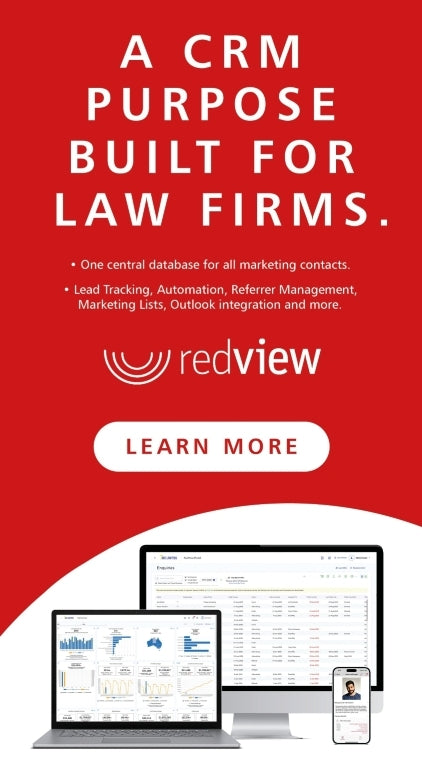
How Agentic AI Will Transform Legal Operations
It’s hard to recall a time when legal professionals weren’t being told that technology, and artificial intelligence in particular, was going to upend the practice of law. AI has been making its way into legal functions for years, quietly being deployed across various areas, from document review to risk management.
If you listen to the conversations happening around law firm boardrooms and inside legal operations departments now, you’ll find the central question isn’t about whether AI belongs in law at all; instead, it is about how to balance the strengths of new AI with the grounding of human judgment and, importantly, how to do it without losing control of outcomes.
The past couple of years have opened a new chapter. We’ve moved from dabbling in machine learning and natural language tools to piloting programs that employ generative AI models. These tools have become capable partners in tasks like drafting, basic negotiations, and clause extraction. While the progress is impressive, seasoned practitioners know that most legal technology solutions to date have remained largely reactive, meaning the systems still wait for us to tell them what to do.
But things are changing fast. We’re now on the cusp of agentic AI, and while the shift may sound buzzword-laden, it is anything but hype. The real difference is autonomy. Instead of AI agents that act like diligent junior paralegals (“go find and summarise indemnity clauses”), agentic AI starts to resemble a motivated associate. You provide an outcome, and it observes, plans, coordinates, and executes multiple steps toward achieving that goal. One agent might redline the agreement; another might flag potential risks; a third might summarise the implications. They act in concert, pulling context from prior deals, regulatory databases, and live business data, but without requiring constant handholding.
A Watershed, but Not Without Caution
It would be naive to mistake this upward climb for a smooth road. For every headline about an AI-driven breakthrough, there is always an unpublished story of a failed pilot or a tool that couldn’t deliver real business impact. In fact, a recent MIT study found that 95% of GenAI pilots failed to show true ROI. And while there may be some debate about how ROI is defined in that particular study, the Stanford AI Index also serves as a sobering check: language models have grown powerful, but struggle with truly nuanced legal reasoning and context-rich situations. Memory, hallucination, and output accuracy remain tough challenges, and as Gartner’s 2025 Hype Cycle recently flagged, GenAI already sits squarely in the “trough of disillusionment” for many legal leaders.
The lesson here isn’t to be jaded. Instead, it’s to recognise that the promise of agentic AI represents a significant step up from merely pragmatic automation. This represents a watershed moment for the broader technology industry, and for the legal sector in particular, marking the beginning of something fundamentally new. For the first time, we have systems that not only perform tasks but can also observe, plan, act, and adapt at scale.
How Agentic AI Changes the Legal Operating Model
Today, some legal departments and ALSPs are experimenting with these platforms in isolated pilots, such as automating a slice of contract review or negotiation. Tomorrow, agentic AI will likely underpin entire legal operating models. The difference? Instead of legal services being a loose patchwork of workflows (each waiting for handoffs, approvals, or lawyer intervention when things get complicated), agentic AI enables orchestrated, end-to-end operational reinvention.
Picture this: in a future-focused contract lifecycle management (CLM) process, agents don’t just automate drafting or approval. They monitor context, analyse live data across disparate systems, flag risks proactively, escalate only when genuinely needed, and even trigger actions in finance, sales, or compliance. Bottlenecks, which are a chronic headache in contracting, are anticipated and circumvented before they can derail business outcomes. That is not speculation; the technology is here, even if the operating models are still catching up.
Agentic AI also calls for rethinking the familiar players in legal service delivery:
- In-house teams shift from perpetual firefighting to holistic orchestration.
- Law firms lean into deep, AI-augmented expertise.
- ALSPs become scalable teams blending agentic platforms with human specialisation.
- Staffing models evolve from body-leasing to intelligent augmentation and collaboration.
Deployment: Why, Where, and How
The path to deploying agentic AI in practice isn’t as simple as “let’s automate everything.” Not every legal task warrants an agentic approach, nor is every operating model ready for the leap. Before charting a course, legal leaders would do well to start with four foundational pillars: strategic alignment, scope of transformation, delivery model, and robust governance.
- Strategic alignment asks: What truly matters for our organisation? Whether it’s faster cycle times, lower costs, tighter risk management, or a better user experience, it’s critical to focus on clear, measurable outcomes. Where are the workflow bottlenecks? Can agents handle contextual decision-making or risk detection more effectively than today’s tools?
- Scope moves the question from “where can I use AI?” to “what would this function look like if agents handled most of it end-to-end?” Consider an end-to-end process and examine its details. For example, if you are considering an agentic AI deployment in the CLM process, examine the full quote-to-cash or procure-to-pay pipeline and how upstream and downstream agents interact with the CLM agents
- The correct delivery model means multidisciplinary teams, not just tech rollouts. It takes legal leaders, architects, process designers, and data stewards to ensure that systems genuinely communicate with each other and outputs are operationally credible.
- Finally, governance cannot be an afterthought. If agentic AI is the engine, then governance is the guardrail. Every action must have an audit trail with robust access controls and transparent reasoning. Human-in-the-loop oversight remains non-negotiable, keeping strategy, ethics, and privilege where they belong: with experienced people.
Architecture: The Agentic Mesh
Perhaps the most overlooked aspect of agentic AI planning is architecture. In this new world, modularity and openness aren’t just best practices; they’re survival tools. Organisations need a mesh of AI agents that can talk to each other, reason across multiple systems (e.g., CLM, research, and case management), remain secure, and connect to both legacy and next-generation systems.
Vendor neutrality matters, too, because you need the freedom to swap tools, test new assistants, or connect to external agents without tearing down what you’ve already built. Open standards (think Model Context Protocol or Agent-to-Agent) are not hype; they’re what make your operating model future-proof.
Principles for a Resilient Legal Function
What does all this mean on a practical level for legal departments?
- Start with architecture: modular, open, secure design prevents costly rework and vendor lock-in.
- Design for orchestration, not mere automation: let agents work in parallel and adapt, multiplying speed and reliability.
- Always align tech deployments with top strategic priorities, whether it’s contract velocity, compliance, or new client-facing capabilities.
- Human oversight isn’t optional; it’s structural—ensuring lawyers don’t just give approvals but actively guide and contextualise every key decision.
- Commit to continuous evolution. Regulations, risk landscapes, and AI models themselves will continue to change, and so must your workflows.
As a final reflection, think of the power of agentic AI solutions when deployed at a legal function level, working in collaboration with other upstream and downstream systems. They can fundamentally transform legal services from intake and triage through to fulfilment.
Agentic AI isn’t something on a far horizon; it’s already reshaping legal work. The real question is not whether agentic AI will transform the profession, but whether we, as legal leaders, operations professionals, and technologists, will design that transformation or react to it as change accelerates around us.
By Alok Priyadarshi
Vice President, Strategic AI Advisory and Legal Transformation at QuisLex






